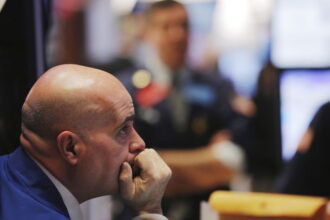By Ambar Warrick
Investing.com — Oil prices rose in early Asian trade on Wednesday, extending gains into a third straight session as disruptions in Kurdish crude shipments and a potentially large draw in U.S. inventories pointed to tighter supply in the near-term.
Crude prices also took some support from improved sentiment towards the banking sector, as a string of regulatory assurances dampened fears of an imminent crisis.
Data from the American Petroleum Institute (API) showed that unexpectedly fell by nearly 6.1 million barrels in the week to March 24 – their sharpest drop since mid-2022. The reading usually heralds a similar trend from due later in the day, which is expected to show a negligible rise in inventories for the week.
futures rose 0.2% to $78.52 a barrel, while futures rose 0.8% to $73.79 a barrel by 21:02 ET (01:02 GMT). Both contracts were set to rise for a third straight session, as they recovered from 15-month lows hit last week.
Oil prices marked a strong start to the week after Iraq halted exports of about 450,000 barrels per day – roughly 0.5% of daily global supply – from the Kurdistan region through Turkey after an arbitration showed that Baghdad’s approval was needed to ship the oil.
Analysts said that continued disruptions in Kurdish supply could underpin oil prices this year, with Barclays positing an at least $3 upside to year-end prices.
Easing concerns over a banking crisis also aided oil prices this week, as traders grew less fearful that a recession will dent oil demand this year.
But on the other hand, union strikes in France and Germany ground economic activity in the two countries to a halt this week, pointing to some near-term weakness in oil demand. French refineries saw staggered operations, while German air travel and public transport were disrupted.
Oil markets are now awaiting from China this week, to gauge the state of an economic recovery in the world’s largest crude importer.
But analyst estimates see growth cooling in March from the prior month, as a post-COVID economic bounce runs out of steam. China is still struggling with weak domestic and overseas demand, amid worsening economic conditions.
Read the full article here










